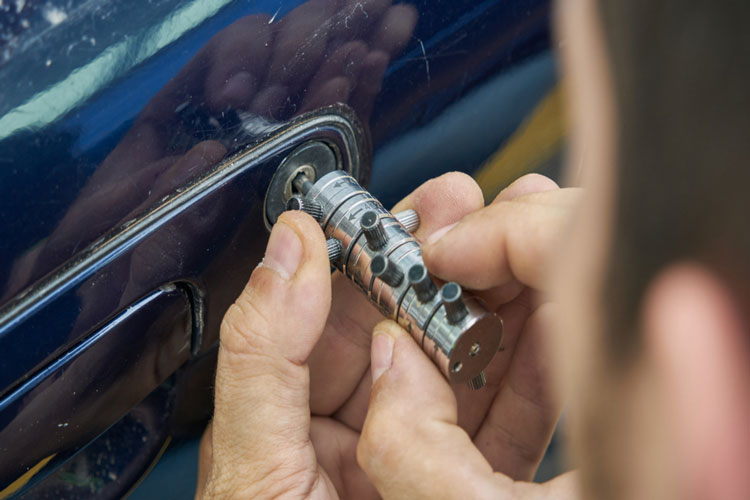If you watch old spy movies where characters pick a lock to enter a secure building or you sometimes get your keys jammed in the lock, you may wonder how locks actually work. While the answer to that question can vary depending on the make and model of a particular lock, locks have a fascinating history that may help you understand how they work.
Ancient Devices
One of the first recorded locks is an Egyptian pin lock, where an inserted key would lift simple obstructing pins away from the bolt to open a door or hatch. However, any device capable of lifting the pins sufficiently high enough could also easily pick the lock.
In addition, these primitive locks were largely composed of wood and brute force could easily break the lock entirely. This is one of the reasons modern locks are made of metals, which are resistant to breaking.
Around the 9th century, warded locks appeared in many medieval establishments, easily recognizable by the distinct, horizontally protruding elements at the end of the key.
This type of lock also gave rise to the skeleton key, where a key with especially wide notches could bypass the wards of any lock of the same general size. However, these locks were once again, easy to pick.
Locksmiths also took strides in disguising keyholes and adding false mechanisms or other sophistications to foil thieves.
Industrial Design
The Industrial Revolution advanced lock-smithing with new tools and technologies that could make smaller and more complicated locks that were more difficult to pick. Several notable characters rose to the occasion, including:
- Robert Barron, who patented a double-acting lever tumbler lock, where lifting the levers too high would no longer work.
- Jeremiah Chubb, who made a detector lock that would automatically jam up if an attempt upon it was made without the correct key.
- Joseph Bramah, who invented a new, unusual kind of lock that couldn’t be picked for almost 70 years.
- Linus Yale Sr., who invented the modern design of pin tumbler locks, also known as the Yale lock.
Level tumbler locks made medieval skeleton keys obsolete by requiring multiple levers to be lifted to specific, differing heights to release the bolt. Such a key would only need to be inserted to function, and pulled out to lock the bolt in its current position.
Many modern locks are a step further than levers, as pin tumbler designs. This lock requires a notched key to lift each spring-loaded pin to a specific point, allowing the user to rotate the entire plug and slide the bolt. These locks are commonly used today, and you could probably recognize their key shape anywhere.
However, these locks are also the same kind that is susceptible to the stereotypical bobby pin technique, which relies on inaccuracies in lock manufacturing to pick the lock one pin at a time.
An additional design type, known as disc tumbler locks, are considered especially high-security because standard tools cannot pick them. These locks are also more resistant to environmental conditions. While some criminals may attempt to destroy these locks entirely by drilling through the sidebar, anti-drilling plates are an easy solution.
Walls to Firewalls
Today, locks have advanced further by branching into new frontiers. Instead of physical locks and keys that are easily lost, picked, or replicated, electronic locks are often more convenient and secure than their older, physical counterparts.
The freedom from spatial constraints has also allowed lock complexity to evolve, with results such as the mighty AES 128-bit or 256-bit encryption, which would require so many resources to hack as to be impractical.
Perhaps the next time you jam your key in the lock, this bit of history can help you appreciate how that lock functions as well as how locks keep you and your home protected. For help with your current locks, visit the experts at Ben’s





